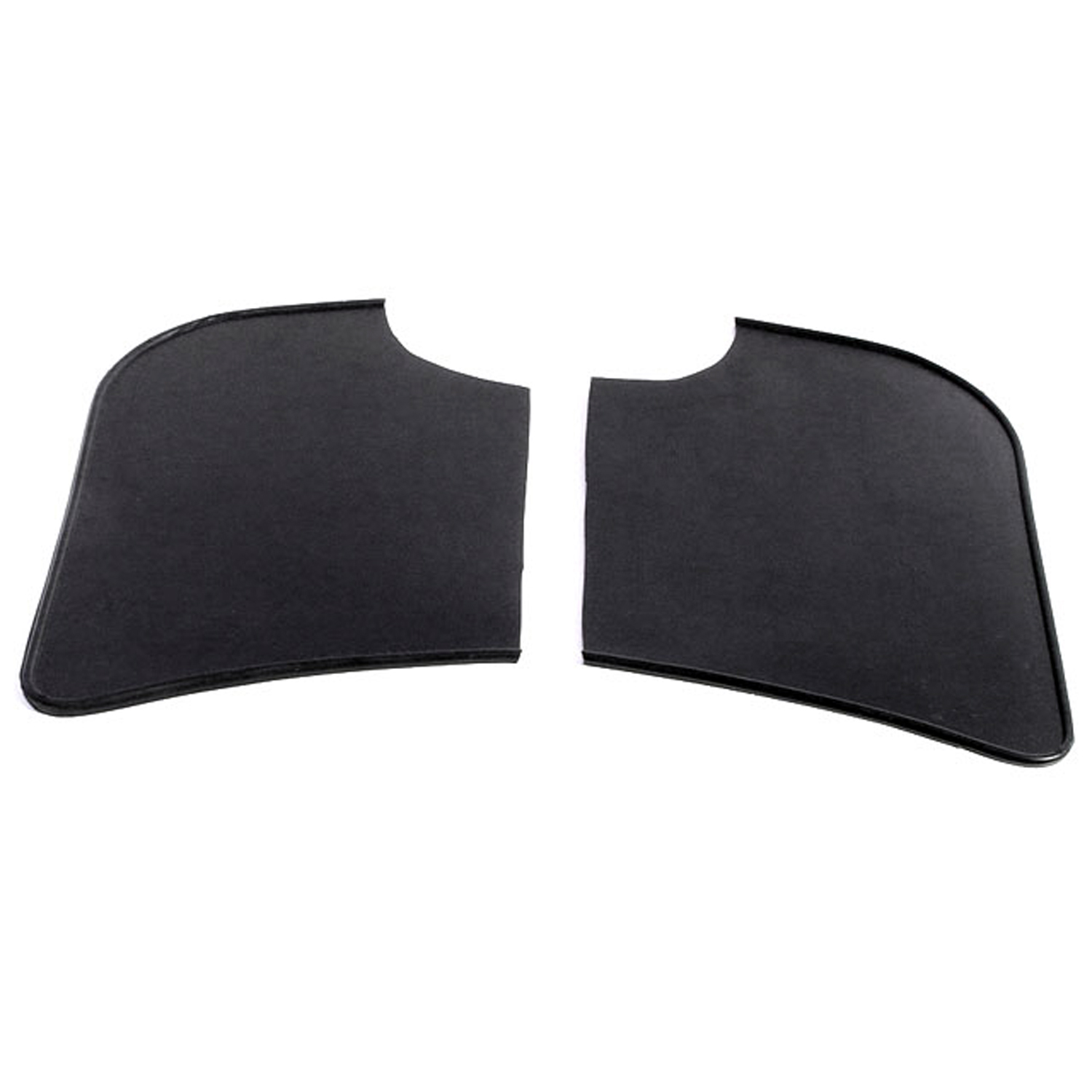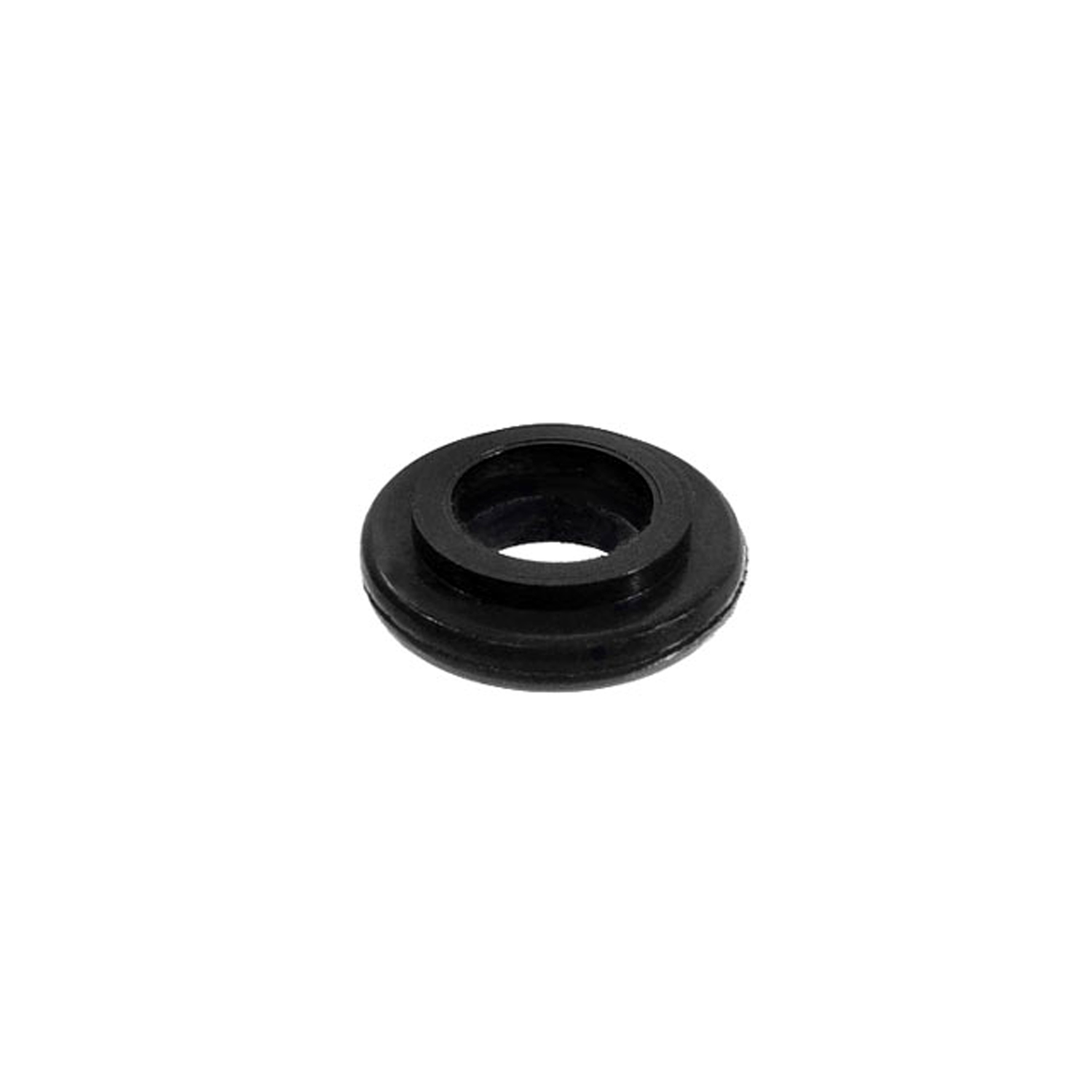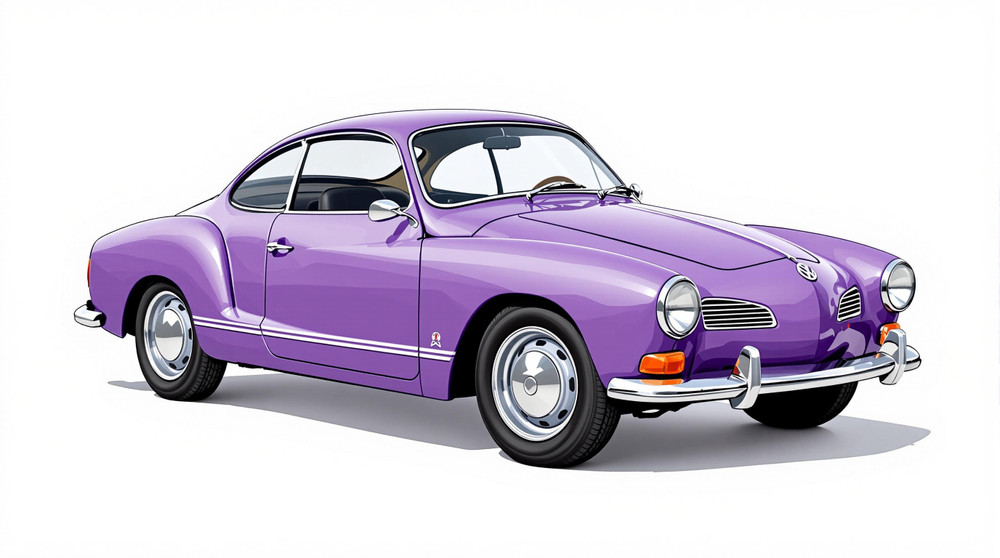Image of 1968 Volkswagen Karmann Ghia, Note: These illustrations use artistic license and may differ from actual historical models.
Performance Metrics
Fundamental Metrics
Emotional Appeal
MMP Rating
| Engine Specifications | |
|---|---|
| Engine: | Air-cooled, rear-mounted, flat-four engine |
| Displacement: | 1493 cc |
| Horsepower: | 53-60 hp |
| Torque: | 78-85 lb-ft |
| Compression Ratio: | 7.7:1 |
| Ignition System: | Distributor ignition |
| Cooling System: | Air-cooled |
| Performance Specifications | |
| 0-60 Time: | 16-18 seconds |
| 1/4 Mile Time: | 20 seconds |
| Top Speed: | 90 mph |
| Transmission and Drive | |
| Drive Type: | Rear-wheel drive |
| Transmission Type: | 4-speed manual |
| Fuel and Efficiency | |
| Fuel System Type: | Carburetor |
| MPG: | 25-30 mpg |
| Dimensions and Brakes | |
| Brakes: | Front disc brakes, rear drum brakes |
| Wheelbase: | 94.5 inches |
| Weight: | 1,874 lbs |
Note: Specifications for classic cars are given to the best of our ability, considering the limited and variant data available.
1968 Volkswagen Karmann Ghia: A Timeless Classic
The 1968 Volkswagen Karmann Ghia is a testament to the allure of elegant design fused with reliable engineering. Born from a collaboration between the German automaker Volkswagen and the Italian designer Carrozzeria Ghia, with coachwork by the German firm Karmann, this vehicle stands as a hallmark of automotive artistry. Its historical significance lies not only in its beauty but also in its role as a bridge between the utilitarian ethos of Volkswagen and the grandeur of Italian design. A notable moment in its history was when it became known as one of the most beautifully designed Volkswagens ever made, earning it a cult following that persists to this day.
Design and Innovation
The exterior styling of the Karmann Ghia is characterized by its flowing lines, long hood, and curvaceous fenders—a stark contrast to the boxy shapes prevalent in many cars of its era. The interior is equally striking, with an emphasis on simplicity and functionality. The quality of materials reflects a commitment to craftsmanship, with features like the flat-faced dashboard and chrome accents that add a touch of sophistication. Technologically, it carried over much from the Beetle but wrapped it in a far more appealing package. Color options ranged from vibrant hues to more subdued tones, with choices like Sea Blue and Cherry Red often catching the eye of enthusiasts. The coupe body style remains iconic, though a convertible option offered an open-air driving experience that was highly coveted.
Historical Significance
The Karmann Ghia's impact on automotive design is undeniable; it brought European styling to a broader audience without compromising on reliability or affordability. It stood apart from contemporaries by offering an air-cooled rear engine layout within a body that exuded Italian flair—a combination unheard of at its price point. Its lasting influence can be seen in how it paved the way for other manufacturers to explore partnerships with design houses.
Performance and Handling
Underneath its stylish exterior, the 1968 Karmann Ghia offered modest performance credentials, with top speeds around 90 mph and acceleration from 0-60 mph in about 18 seconds. Handling was nimble for its time, thanks to its lightweight construction and balanced weight distribution. Drivers often remark on the tactile feedback through the steering wheel and the distinctive air-cooled engine note that becomes all the more engaging as you push through the gears.
Ownership Experience
The Karmann Ghia was versatile enough to serve as a daily driver or a weekend showpiece. Its mechanical underpinnings shared with the Beetle meant maintenance was straightforward and parts were readily available. Reliability was one of its strong suits, although rust could be an issue if not properly managed.
Fun Facts
Amongst enthusiasts, tales abound of rare editions like the 'Type 34', which featured a more angular design and is sought after for its rarity. Celebrity ownerships have included names like John F. Kennedy and Jay Leno, enhancing its cool factor. While it wasn't known for setting speed records, it did set benchmarks for sales among sports cars in its class during its production run.
Collector's Information
Today, collectors cherish the 1968 Karmann Ghia for its unique blend of style and practicality. With over 445,000 units produced during its entire production run from 1955 to 1974, it's moderately rare but still accessible for enthusiasts looking to own a piece of automotive history. Values vary widely based on condition and originality but typically range from $10,000 for a driver-quality example up to $30,000 or more for concours-level specimens.
Conclusion
The 1968 Volkswagen Karmann Ghia stands as an icon of mid-century automotive design—a vehicle that transcends mere transportation to become something truly special. It's a car that continues to captivate collectors and enthusiasts alike with its timeless elegance and enduring charm.
1968 Volkswagen Karmann Ghia Catalog of Parts
 1968 Volkswagen Karmann Ghia Gravel Shields. Molded flat without metal backing plates-FS 40Gravel Shields. Molded flat without metal backing plates. Apply with contact cement. 7-5/8" long X 5-5/8" wide at top. Pair
1968 Volkswagen Karmann Ghia Gravel Shields. Molded flat without metal backing plates-FS 40Gravel Shields. Molded flat without metal backing plates. Apply with contact cement. 7-5/8" long X 5-5/8" wide at top. Pair 1968 Volkswagen Karmann Ghia Oil Cooler Seal. 7/16" I.D., 7/8" O.D. Each-RP 8-BOil Cooler Seal. 7/16" I.D., 7/8" O.D. Each
1968 Volkswagen Karmann Ghia Oil Cooler Seal. 7/16" I.D., 7/8" O.D. Each-RP 8-BOil Cooler Seal. 7/16" I.D., 7/8" O.D. EachWhy Choose Metro?
For over 100 years, Metro Moulded Parts has been the pinnacle of quality in classic car restoration parts. Our commitment to precision and authenticity in every component ensures a perfect fit and an OEM-level appearance.
- Expert Craftsmanship & Quality: Each part is a testament to our dedication to reliability and perfection, crafted from original designs and thoroughly tested.
- Advanced Technology: We use cutting-edge techniques to create flawless, long-lasting parts that surpass others in performance.
- SuperSoft Sponge – The Ultimate Door Seal: Not only are our door seals 30% softer than competitors', but they're also guaranteed to never leak. They effectively reduce wind and road noise, enhancing your classic car's comfort and driving experience.
- Proudly American: Our parts are a product of American craftsmanship, made in the USA with a spirit of excellence and heritage.
- Unrivaled Warranty: We back our products with a 30-year industry-leading warranty, a testament to our confidence in their quality.
Join us in preserving the legacy of classic cars with parts that are crafted for perfection, not just made.

